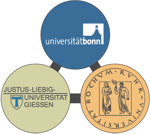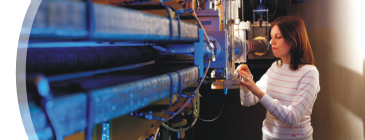
|
|

|
Project overview
Hadron properties
Project area A deals with the spectroscopy of baryon resonances. Double polarization experiments are performed to unravel the properties of the pertinent resonances. These data are further investigated in a dedicated multi-channel partial wave analysis together with many other available data sets. These investigations are complemented by theoretical studies using large-Nc QCD, finite volume effective field theories and various functional methods.
Hadron dynamics
Hadron structure
Instrumentation
Project area D deals with polarized target, detector and accelerator physics. A new “4π-continuous mode” target will be finalized and new target materials will be developed. Research on accelerator physics will lead to enhanced beam polarization, intensity and quality. An installation of a new APD- readout of the Crystal Barrel calorimeter will significantly improve the timing and tracking possibilities for the Crystal Barrel/TAPS set-up. The projects will benefit the double polarization experiments considerably and in addition pave the way to double polarization measurements off the neutron.



